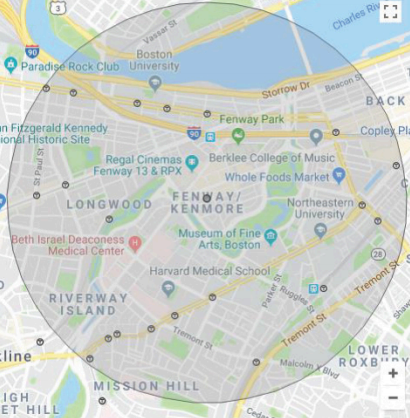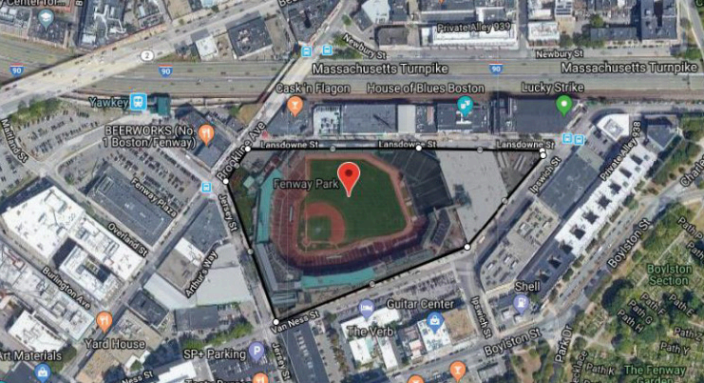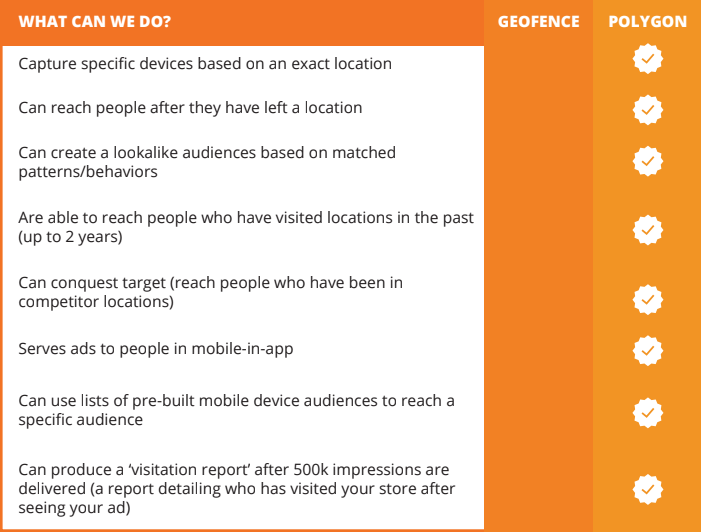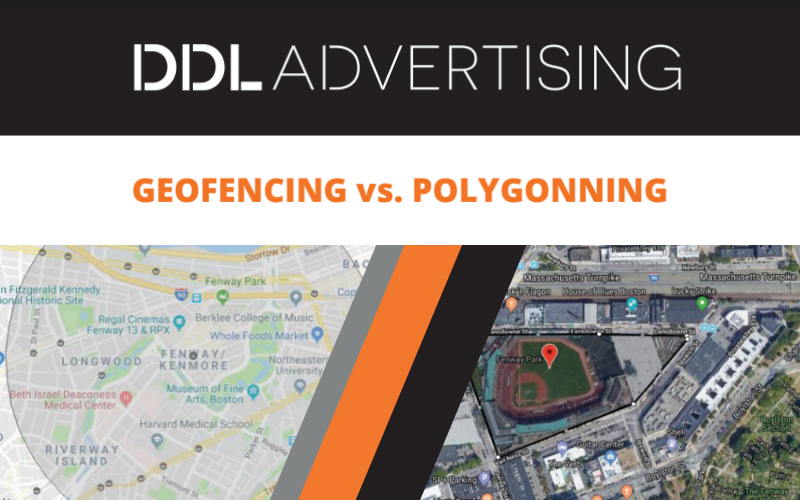With millions of people on mobile devices, what if there was a way to target people in a certain location at a specific time?
Not only is it possible, but available in different approaches; geofencing and polygonning.
Geofencing is the technology of using a virtual geographic boundary to reach people within those perimeters while they are there. Once the “virtual barrier” is established, we can reach those who cross into those boundaries. With geofencing, we are only able to serve ads to people who are within those perimeters. Once they leave that geofence, we have “lost” (we are unable to serve them ads).

Mobile Geofence Example: Fenway Park, Boston MA
Under Armor is your client and they want to target ticket holders at a Boston Red Sox game in Fenway Park. A one-mile geofence around the park not only reaches Fenway itself, but it also is reaching a movie theater, a museum, a hospital, a university, highways… etc. This means that we could be reaching a lot of people within that radius that may not be interested in sporting clothes/gear. While geofencing works really well for several categories or prospects, this may not be one of them. If Under Armor is looking to reach people with specific boundaries we need something more precise…
Mobile Polygon
Polygonning is a technology of setting precise geographic borders to reach those within those boundaries. Polygonning has become our solution to find a more defined audience to serve ads to. Not only can we reach people within the boarders of the polygon, we can also reach those people after they have left the perimeters.

Mobile polygon example: Fenway Park, Boston MA
With polygonning, we can now target just Fenway Park itself to reach the people who are within that stadium and serve them ads for Under Armor without the bleed out to surrounding locations. We can also reach those people once they have left the stadium AND reach other ticket holders from previously held games!


